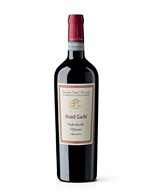Weekend Wine: This Dry Rosé is a Summertime Dazzler
It's a Washington winner in deep pink
By Wes Marshall, 8:05AM, Sat. Jul. 18, 2020
Chateau Ste. Michelle has long been one of the country’s finest wineries and a lot of their success occurred under the tutelage of Allen Shoup from 1980 to 2000. When he left that winery, he started his own boutique operation called Long Shadows Vintners.

His idea was to bring some of the world’s greatest winemakers to Washington to make wines from Columbia Valley grapes. The winemakers represented sought after brands like Penfold’s Grange, Caymus, Quintessa, and Chateau Le Bon Pasteur. For his managing winemaker, he recruited one of Washington’s best, Gilles Nicault.
Most of their wines are quite expensive and I have to admit, out of my normal price range. But one of his wines is also one of the most beguiling rosés in my experience (and I’ve tried several hundred different brands). The name of the wine is Julia’s Dazzle ($19) and for once, a marketing name is not an exaggeration. This is a dazzling wine that tickles the tip of your tongue with lively acidity, yet also carries incredible depth allowing it to match up perfectly with salmon or redfish.

For the few wine-nerds in our audience, this wine is made from the aromatic Pinot Gris, which is not a normal grape for rosé. Since the winery stipulates it is 100% Pinot Gris, I had to send a quick note to Mr. Nicault to ask how he got such beautiful deep pink color to the wine. His response gives us a hint about the winemaking. "To get the right color intensity on the Dazzle, we keep all the free run that contains no color pigmentation and make our Nine Hats Pinot Gris white and use the pressed wine for Julia’s Dazzle.”
That means they use the juice that just runs from the grapes with no pressure other than their own weight to create their white version, called Nine Hats ($15; not yet tasted, but it will be soon). After that juice has been drained, they lightly press the grapes. Nicault continued: “As we start pressing, the flavors, tannins and color are extracted from the skins. Since the free run has already been set aside, it concentrates all these compounds at a smaller ratio in the end volume bringing that beautiful color and texture in the mouthfeel."
The result is a surprisingly rich pink color and a more powerful representation of the grape’s flavors, aromas, and its extracts, along with a way to make something fascinating from juice that might normally get used in some other, less interesting ways. If you have any interest in dry rosés in general or Pinot Gris in particular, this is a wine you really should try. A complete triumph.
A note to readers: Bold and uncensored, The Austin Chronicle has been Austin’s independent news source for over 40 years, expressing the community’s political and environmental concerns and supporting its active cultural scene. Now more than ever, we need your support to continue supplying Austin with independent, free press. If real news is important to you, please consider making a donation of $5, $10 or whatever you can afford, to help keep our journalism on stands.
April 18, 2024
Chateau Ste. Michelle, Allen Shoup, Long Shadows Vintners, Penfold’s Grange, Caymus, Quintessa, Chateau Le Bon Pasteur, Gilles Nicault, Pinot Gris, Julia’s Dazzle, Nine Hats, Columbia Valley






